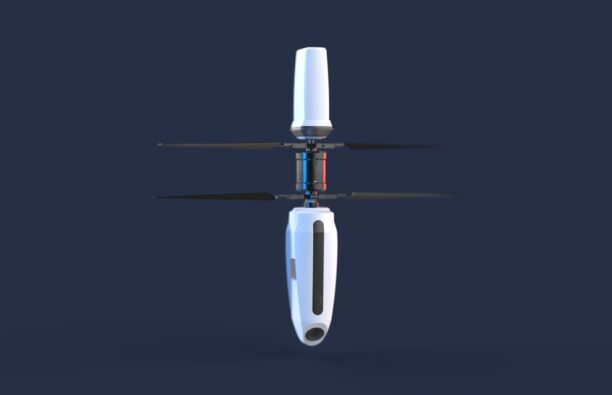The United States is now taking its broadest, most coordinated action yet to shape the future of its drone ecosystem. Through a mix of regulatory restriction—the “stick”—and an array of market-building incentives—the “carrot”—federal agencies and lawmakers are pursuing their overarching goal: building a robust, innovative, and secure U.S. drone industry while reducing national reliance on Chinese-made platforms.
The “Stick”: Section 232 and Targeted Regulatory Action
Recent moves by the U.S. Department of Commerce, particularly the Section 232 investigation, are part of a targeted effort to assess and mitigate national security risks associated with Chinese-manufactured drones and critical components. This investigation, working in parallel with new ICTS rulemaking and significant provisions in the FY25 National Defense Authorization Act (NDAA), gives regulators broad powers to curb imports or set restrictions on drones and technologies linked to foreign adversaries—above all, China’s DJI, which currently dominates both the consumer and enterprise market in the U.S.
Such scrutiny is not mere symbolism. The NDAA required a security risk review that could see Chinese-made drones added to the FCC Entity list – banning them from use of FCC bandwidth and effectively preventing new models from entering the market. Meanwhile, new Commerce Department guidelines aim to precisely target the highest-risk platforms and technologies, using hardware and software markers to prevent companies from merely shifting assets to different companies to skirt restrictions.
The “Carrot”: Incentives for U.S. Domestic Drone Manufacturing
In tandem with new restrictions, U.S. lawmakers and defense officials are marshaling breakthrough incentives to cultivate a strong domestic drone sector. The $13.5 billion “One Big Beautiful Bill Act” (OBBBA)—the largest federal drone commitment since the Reaper era—creates near-term funding and demand signals for U.S. drone startups and scale players, encouraging the expansion and rapid prototyping of secure, affordable UAS platforms.
The Pentagon’s Replicator Initiative and Defense Secretary Pete Hegseth’s sweeping procurement reforms complement these efforts. Secretary Hegseth’s July 2025 memo stripped away years of “red tape,” setting fast-track acquisition goals and creating explicit purchase commitments for American drone companies—especially those able to deliver low-cost, attritable drones at scale. These actions, together with NDAA provisions to fund U.S. supply-chain expansion and support critical component production, provide manufacturers with both the near-term opportunity and long-term confidence needed for sustained investment.
As Peter Fuchs, CEO of Ascent Aerosystems, explained: “The carrot-and-stick analogy is a fair characterization [of the Section 232 investigation, OBBBA guidance, and Secretary Hegseth’s memo combination], and gives the U.S. drone industry the clearest signal yet that domestic UAV manufacturing matters. For manufacturers like us, that combination could create the market predictability and industry confidence required to invest, scale, and deliver the next generation of American made UAVs. And American manufacturers are ready to deliver.
In fact, building rugged, reliable, UAS platforms right here at home is more than just good policy, it’s the right business strategy, and one we’ve followed at Ascent since the very beginning.
That said, intent alone won’t build a sustainable industrial base. What we need now is action—clear purchase commitments, near-term acquisitions, and long-term programs—to ensure we can build here at home and lead from the front.”
Alignment Across U.S. Federal Policy
Federal alignment on both national security and innovation can now be seen in a multi-pronged approach that synchronizes the Section 232 and ICTS rulemakings, OBBBA funding, and military procurement reforms, alongside NDAA-driven supply chain investments.
Michael Robbins, President and CEO of the Association for Uncrewed Vehicle Systems International (AUVSI), summarized this convergence: “Federal policy is aligning to both fuel U.S. drone innovation and hold adversarial actors accountable. With billions in federal funding directed toward trusted UAS and strong national security measures like Commerce’s 232 investigation, ICTS rulemaking, and NDAA 1709, America is building a drone ecosystem that is both competitive and secure.”
Not Without Critics: Concerns Over Costs, Capability, and Transition
Not everyone supports an outright ban or immediate restrictions on Chinese drones. Many public agencies, small businesses, and commercial service providers rely heavily on platforms from market leaders like DJI for their affordability, ease of use, and advanced features. Critics warn that a ban—without a transitional grace period or adequate funding to replace existing fleets—could raise costs and disrupt critical services. Some fear domestic platforms may be unable, in the near term, to match the price and functionality of Chinese counterparts, potentially putting emergency response agencies, infrastructure operators, and small business owners at a disadvantage.
DJI itself has vigorously contested claims of security risk, emphasizing its robust data privacy controls and willingness to submit to independent audits: “We believe our products can stand up to scrutiny because our security protections and data privacy controls are real and robust … we welcome the opportunity to participate in a rigorous, transparent and fair audit … America’s drone community deserves due process.”
Still, regulatory leaders and many U.S. manufacturers point to the strategic vulnerability of relying so heavily on a single overseas supplier for both hardware and software—a dynamic that poses risks not only for security but also for supply chain independence.
The Road Ahead
The result of this “carrot and stick” policy blend is a drone industry at a vital inflection point. Federal efforts are poised to unleash unprecedented investment and industrial expansion in the U.S. drone sector, even as they push back against the risks of market dependence on Chinese platforms. The long-term vision: an American drone ecosystem that is secure, resilient, and globally competitive—but one whose transition will require careful management to balance innovation, user needs, and national security.
Read more:


Miriam McNabb is the Editor-in-Chief of DRONELIFE and CEO of JobForDrones, a professional drone services marketplace, and a fascinated observer of the emerging drone industry and the regulatory environment for drones. Miriam has penned over 3,000 articles focused on the commercial drone space and is an international speaker and recognized figure in the industry. Miriam has a degree from the University of Chicago and over 20 years of experience in high tech sales and marketing for new technologies.
For drone industry consulting or writing, Email Miriam.
TWITTER:@spaldingbarker
Subscribe to DroneLife here.


